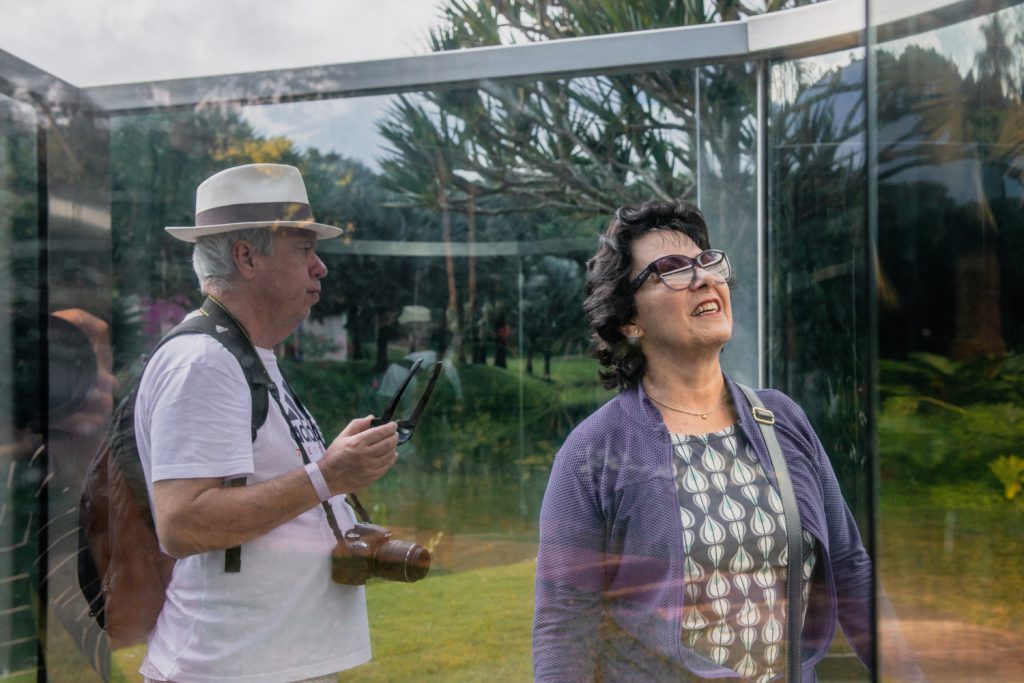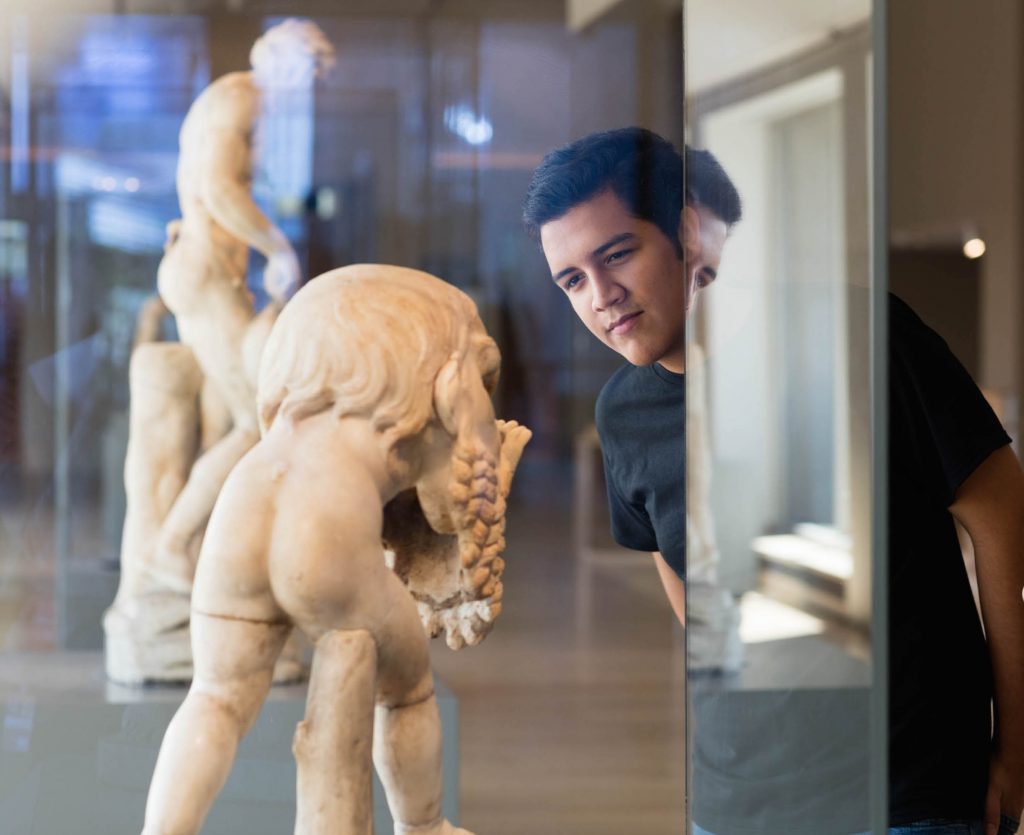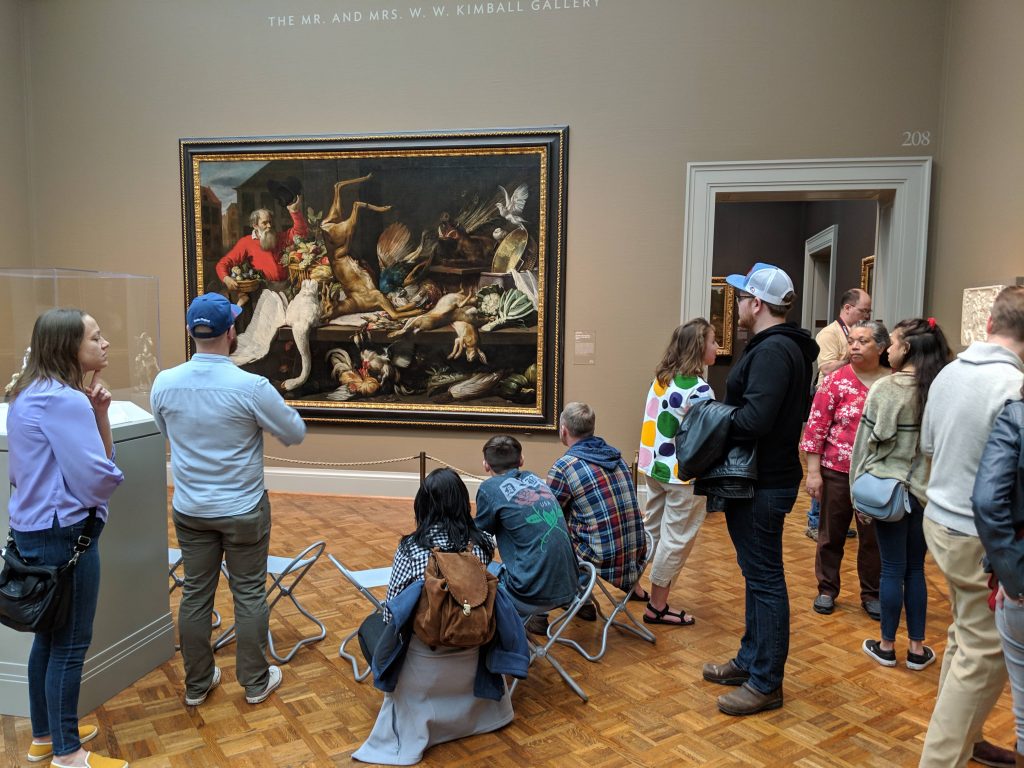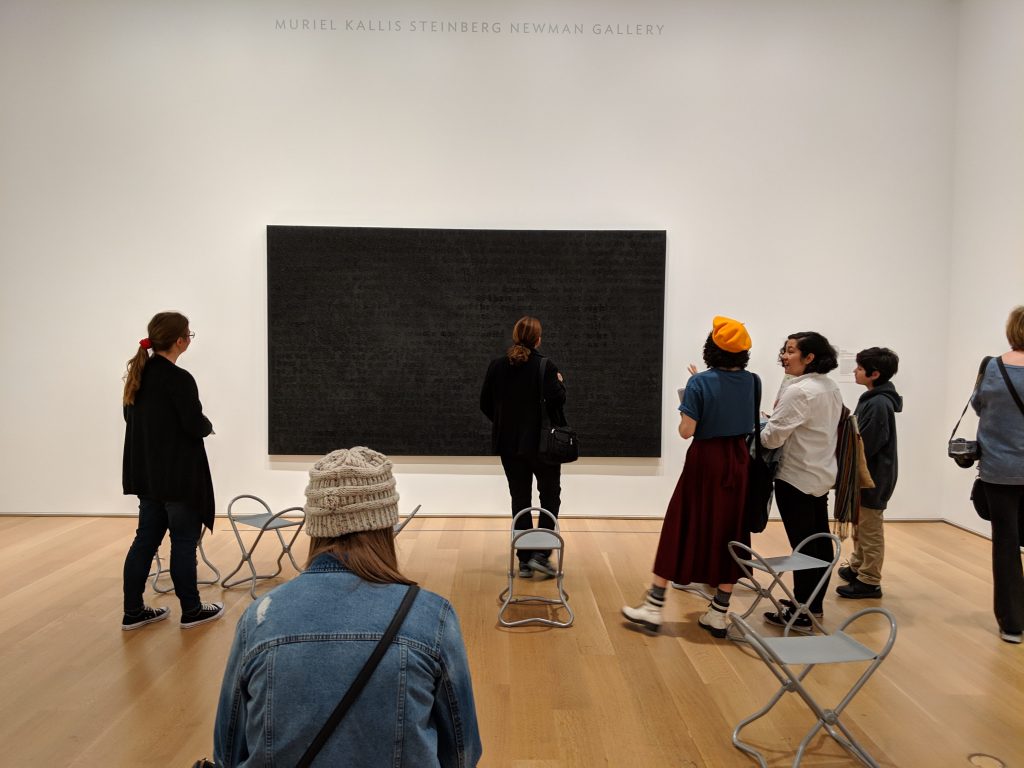2019 was the first year Slow Art Day came to Brazil’s largest foundation of contemporary art, Inhotim, which is also one of the largest outdoor art centers in Latin America. Located in Brumadinho (Minas Gerais), just 60 km (30 miles) away from Belo Horizonte, the Institute has a total area of 1942.25 acres in the biome of the Atlantic Forest.
Renan Zandomenico, educator and mediator, began the Slow Art Day experience in the central area of the Institute, where he says the memory of the past and the present combine in diverse species groups, and where the main tree, Enterolobium contortisiliquum, names the space.
After leaving the central area, the Slow Art Day visitors walked slowly over to their first artwork, Bisected triangle, Interior curve, 2002, by Dan Graham.
“Walking along the lakes slowly and seeing the integration of art and nature, we entered and stayed in Dan Graham’s Bisected triangle, Interior curve, 2002. Slowing down allowed us to experience how Graham’s distorted glass subverts the colors and shapes of the trees and buses and of the other artworks surrounding the area,” said Zandomenico (see photo below).

The program continued by slowly entering nearby pavilions which house the works La intimidad de la luz en St Ives: Inhotim, 1997, by Argentine artist Victor Grippo, and Black ³, 2008, by North American artist Robert Irwin. In the pavilions, Zandomenico asked the participants to slow down and contemplate the nuances of light while also listening to the “breath of nature.”
They then went to their final artwork Im Here, But nothing, 2000, by Japanese artist Yayoi Kusama. Her work allowed them to “pause and search for details and memories through the ultra-violet and domestic atmosphere” created by Kusama’s art.
They finished Slow Art Day in the garden with conversation and a breathing exercise next to the blue palm (Bismarckia nobilis). The participants talked about how slowing down surprised them and allowed them to see and be inspired by art and nature (and art in nature) in new ways.
Inhotim was clearly able to provide Slow Art Day 2019 participants with a powerful meditative and multi-sensory experience. We look forward to their 2020 participation.
– Ashley



